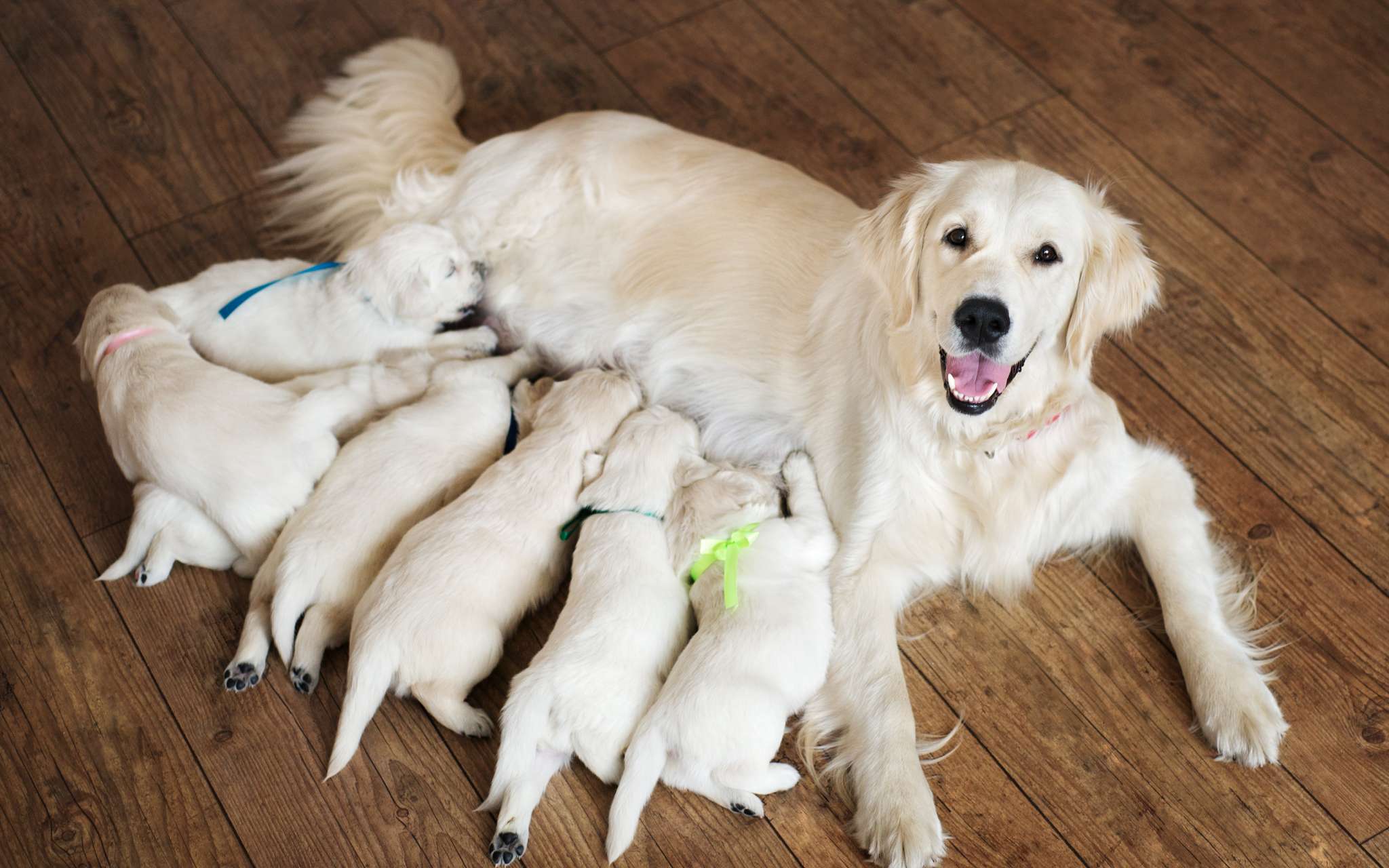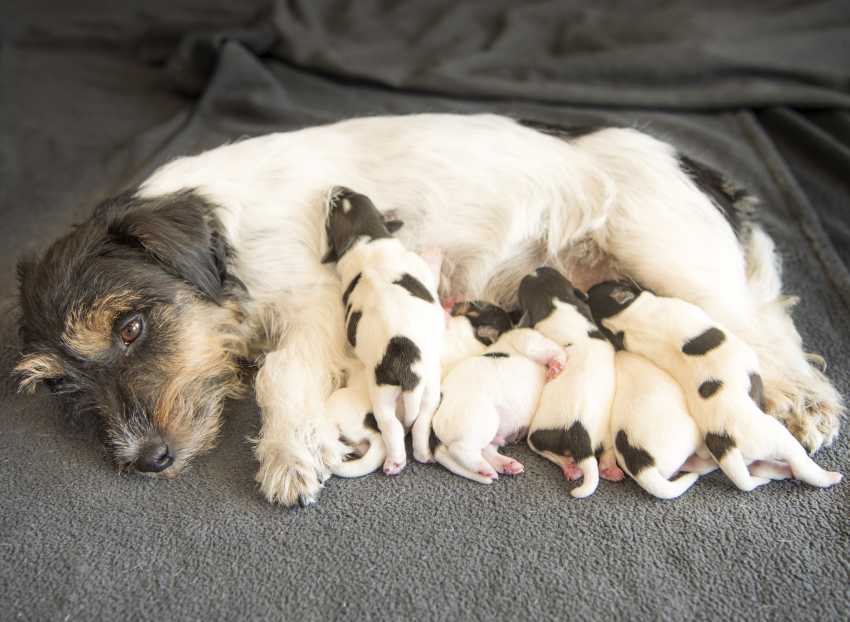Gestation of a dog
Dogs, like humans, reproduce. We will see in this article how the reproductive period in dogs occurs, but also, in case of pregnancy, how the gestation period goes.
You will soon know everything about this important stage in the life of a dog, and will be up to date to take care of her health 🙂 !
Better understand canine reproduction
First of all it is important to know at what age our companions can reproduce. Males can reproduce from 8 or 10 months of age depending on the breed and females from 6 to 12 months depending on the breed. The bitch has her heat about every 6 months, that is to say about twice a year.
The cycle can last more or less 180 days, the gestation period between 58 and 63 days and the bitches can have between 1 and 22 babies. We realize that everything is much faster than in our country. We are going to study the sexual cycle of the bitch a little bit more deeply so that you can better spot at what stage she is.
• We will start with what is called the pro-oestrus: this stage lasts between 4 and 15 days. You may notice some bloody vulvar discharge. The bitch is not yet in the mating phase.
• Then we have the oestrus: this one can last between 5 and 15 days. You will feel that your bitch is more nervous, she will seek and accept the company of the male. This is when mating can occur. If you see a male dog glued to your female, do not try to separate them as this could damage his sheath. Usually they will be back to back, just wait for them to finish.
• Finally there is the metoestrus stage: which can last from 130 to 140 days. If the bitch has been mated, the gestation begins. On the other hand, if the bitch has not been bred, it can happen that she will have what is called a pseudo-pregnancy, which means that she will have all the symptoms of a pregnant bitch but she is not. This must be monitored closely because she may have complications.
• Once the gestation is over, the most interesting but sometimes the most stressful part of the process is the whelping. There are also different stages. You will need to look for the signs of labor.

Warning signs of an upcoming whelping
Here are the signs that should alert you to a whelping in the coming days:
• Your bitch's temperature may drop by one degree 24 hours before delivery. It will be essential to take her morning and evening about a week before the expected delivery date.
• Your pet's udder will enlarge and milk will come out if you press on it. This is a sign that labor is approaching or even imminent (especially in primiparous bitches, i.e., for bitches giving birth for the first time).
• You may see mucus flowing from the vulva, which indicates that labor is beginning.

The delivery process
If you have to attend the delivery of your dog, here is how it will happen, and how to proceed to help her best:
• During the first phase of labor, which can last from 2 to 12 hours or more, you may notice a change in your dog's behavior. She may appear stressed and cling to you abnormally. It is important to put her in a quiet place and avoid any changes that could further stress her and delay the delivery. The bitch may be panting, which means that she may seem out of breath, anorexic (she is not eating).
• Then, we witness the expulsion of the puppies. You will have to be very conscientious in order to observe any anomalies. You will be able to notice regular contractions, so observe her belly, then she will start to push. A delivery can last from 12 to 36 hours. In general, the bitch takes 15 minutes to expel a baby, so after 20 minutes, it becomes worrisome. Between two puppies it can take from 10 to 60 minutes or more. On the other hand, if it exceeds three hours it is not normal.
• Here the babies are born. They are surrounded by a pouch, normally you don't have to take care of them, the mother will lick them, break her pouches and stimulate her babies with her tongue. You should hear them crying quite quickly.
Phew, everything went well, you have witnessed a wonderful moment of life. In the days following the birth, you will have to follow the good progress of the puppies, check that they are all suckling, that they are gaining weight. A visit to the veterinarian with everyone (mom and babies) can be a good thing to follow up.
If during the delivery, some things seem abnormal to you, you can contact your veterinarian who will be able to advise you or maybe tell you to bring the mother if an element seems worrying to her in order to have an eye on her.
Loving and educating your pet also means protecting it against the hazards of life. This is why we strongly recommend that you take out health insurance as soon as possible. This will save you astronomical veterinary fees in case of accident or illness.


